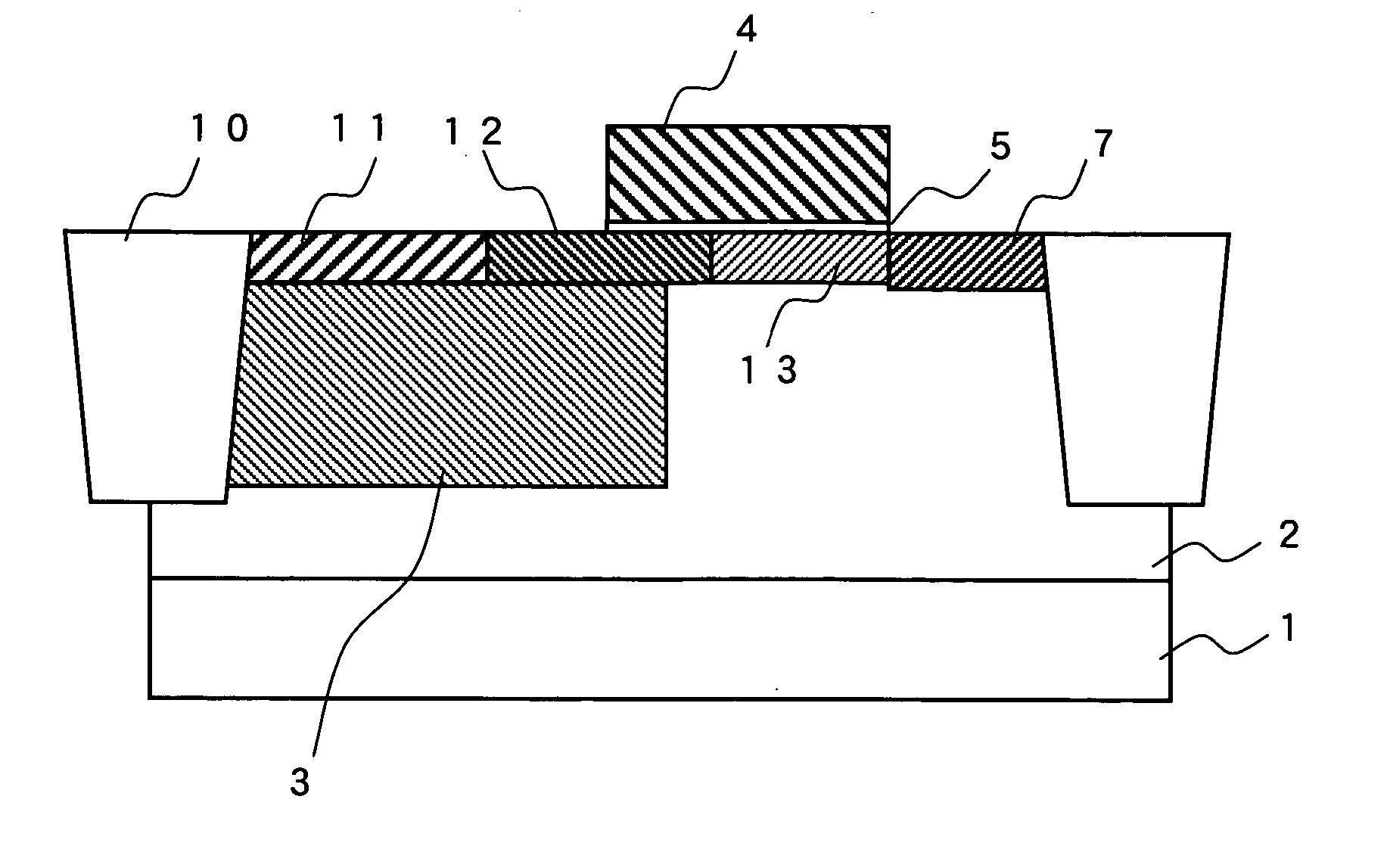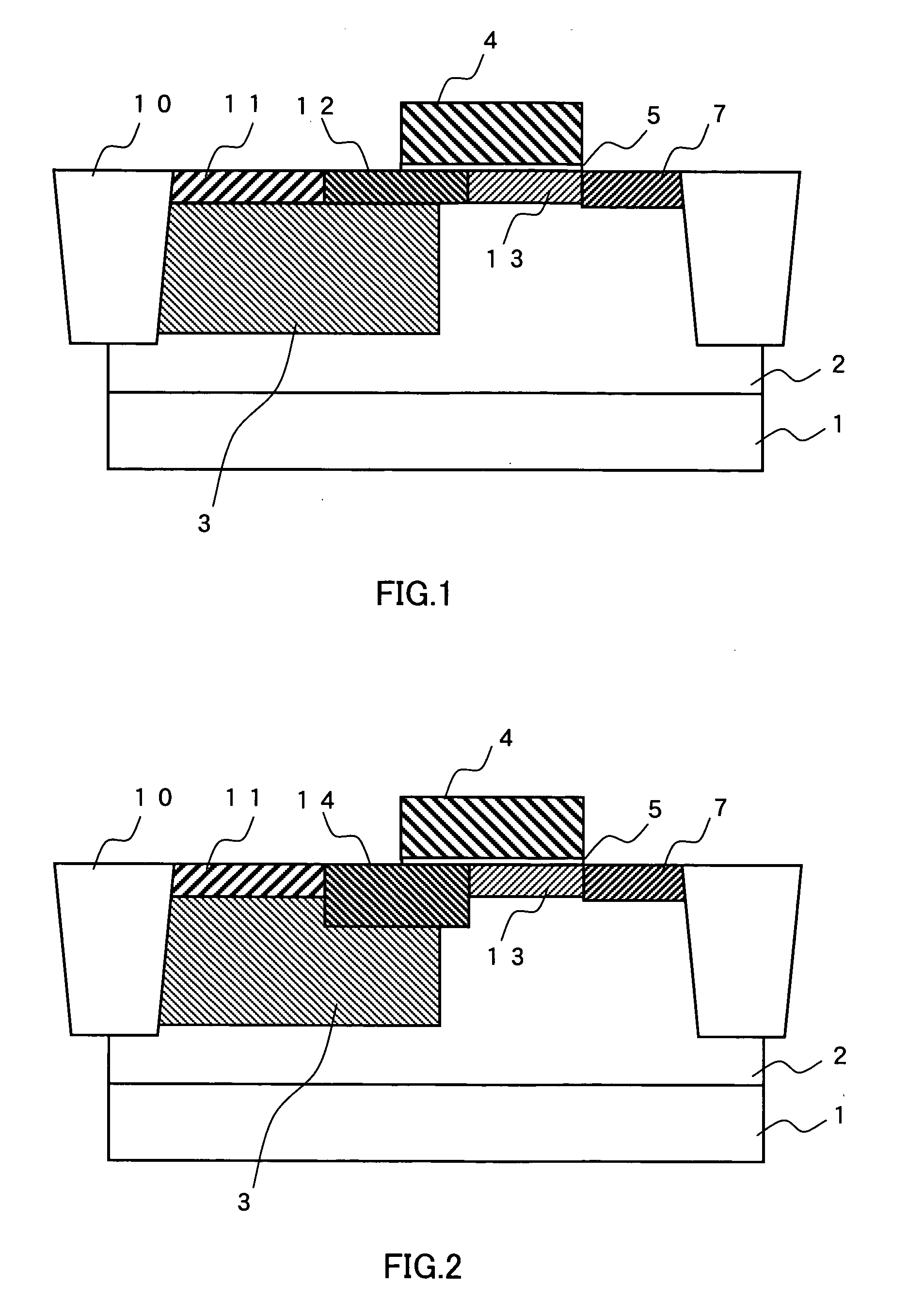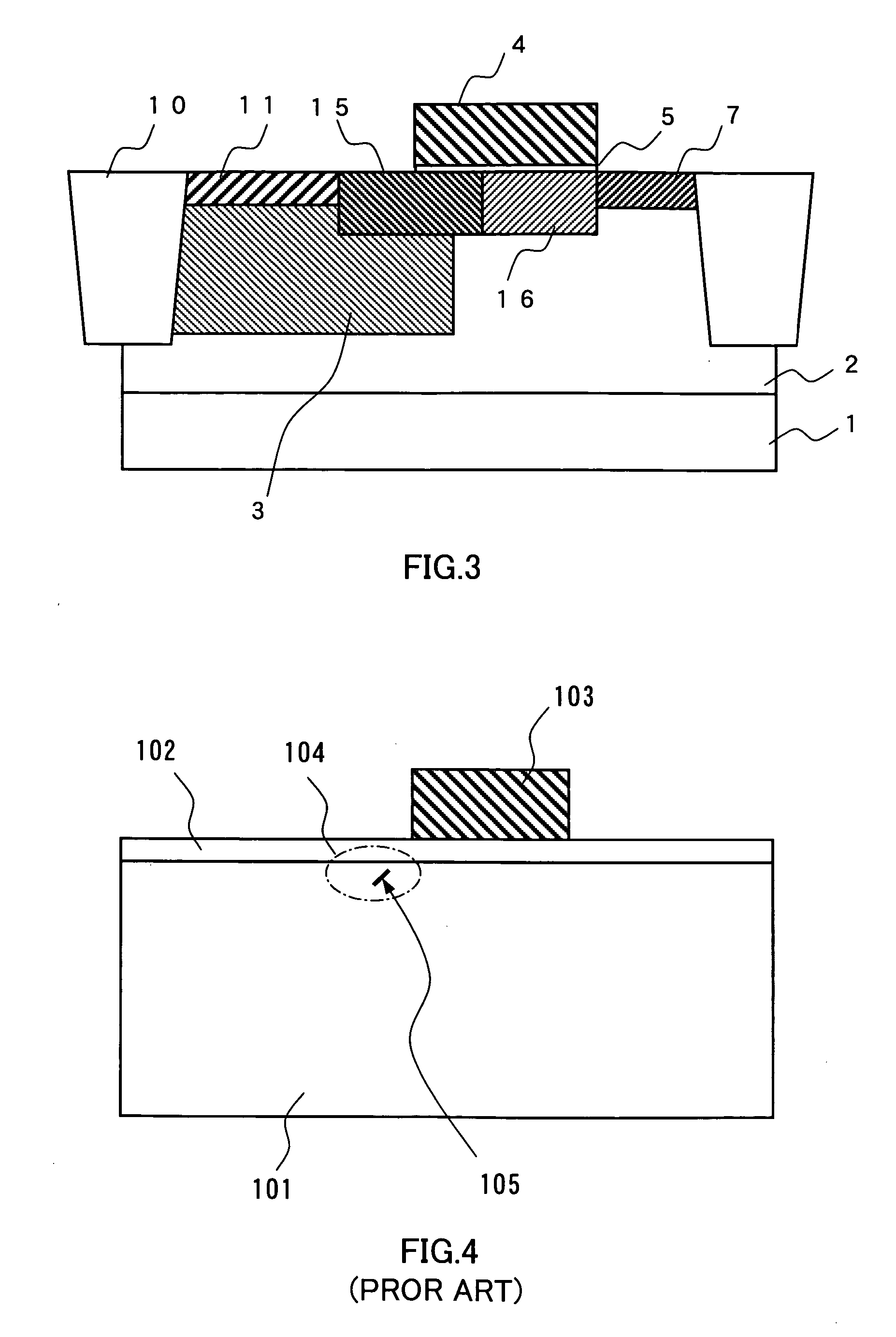Solid-state imaging device and method of manufacturing the same
a solid-state imaging and imaging device technology, applied in the direction of color television, television system, radio control device, etc., can solve the problems of reverse-direction leakage current at a pn, degrade the performance of the solid-state imaging device, and state imaging device, so as to suppress image defects sufficiently and improve the readout characteristic
- Summary
- Abstract
- Description
- Claims
- Application Information
AI Technical Summary
Benefits of technology
Problems solved by technology
Method used
Image
Examples
first embodiment
[0022]FIG. 1 is a cross-sectional view showing a cell structure of a solid-state imaging device according to a first embodiment. Inside a P-well 2 of a Si substrate 1, a N-type photodiode region 3 for photoelectrically converting incident light is formed. A gate electrode 4 is disposed so that one edge thereof forms an overlapping region with the photodiode region 3. Adjacent to the other edge of the gate electrode 4, an N-type drain region 7 is formed. Under the gate electrode 4, a gate oxide film 5 having a thickness of not more than 10 nm is formed. An element-isolating portion 10 having a STI (Shallow Trench Isolation) structure isolates respective elements composed of a photodiode and a plurality of MOS transistors.
[0023] On the surface portion of the photodiode region 3, a P-type first region 11 having a P-type first concentration and a P-type second region 12 having a P-type second concentration are formed. In a region adjacent to the P-type second region 12 and extending to...
second embodiment
[0027]FIG. 2 is a cross-sectional view showing a cell structure of a solid-state imaging device of a second embodiment. Identical reference numbers are used for components common to those of the first embodiment described above, and detailed explanation will be omitted for these components.
[0028] In this embodiment, a P-type second-A region 14 is formed in place of the P-type second region 12 of the first embodiment. The P-type second-A region 14 is characterized in that a bottom of the P-type diffusion layer is positioned deeper than bottoms of the P-type diffusion layers of the P-type first region 11 and the P-type third region 13. For positioning the bottom of the P-type diffusion layer of the P-type second-A region 14 deeper than those of the P-type first region and the P-type third region, the acceleration energy of ion implantation is increased. That is, when E1 denotes an acceleration energy of the P-type first region 11, E2A denotes an acceleration energy of the P-type seco...
third embodiment
[0030]FIG. 3 is a cross-sectional view showing a cell structure of a solid-state imaging device according to a third embodiment. Identical reference numbers are used for components common to those of the first embodiment described above, and detailed explanation will be omitted for these components.
[0031] In this embodiment, a P-type second-B region 15 and a P-type third-A region 16 are formed in place of the P-type second region 12 and the P-type third region 13 of the first embodiment. This embodiment is characterized in that bottoms of the P-type diffusion layers of the P-type second-B region 15 and of the P-type third-A region 16 are positioned deeper than the bottoms of the P-type first region 11. For obtaining this structure, the energy of ion implantation during formation of the P-type difffusion layers is increased so as to position the bottoms of the P-type difffusion layers of the P-type second-B region 15 and of the P-type third A region 16 deeper than the bottom of the ...
PUM
 Login to View More
Login to View More Abstract
Description
Claims
Application Information
 Login to View More
Login to View More - R&D
- Intellectual Property
- Life Sciences
- Materials
- Tech Scout
- Unparalleled Data Quality
- Higher Quality Content
- 60% Fewer Hallucinations
Browse by: Latest US Patents, China's latest patents, Technical Efficacy Thesaurus, Application Domain, Technology Topic, Popular Technical Reports.
© 2025 PatSnap. All rights reserved.Legal|Privacy policy|Modern Slavery Act Transparency Statement|Sitemap|About US| Contact US: help@patsnap.com



